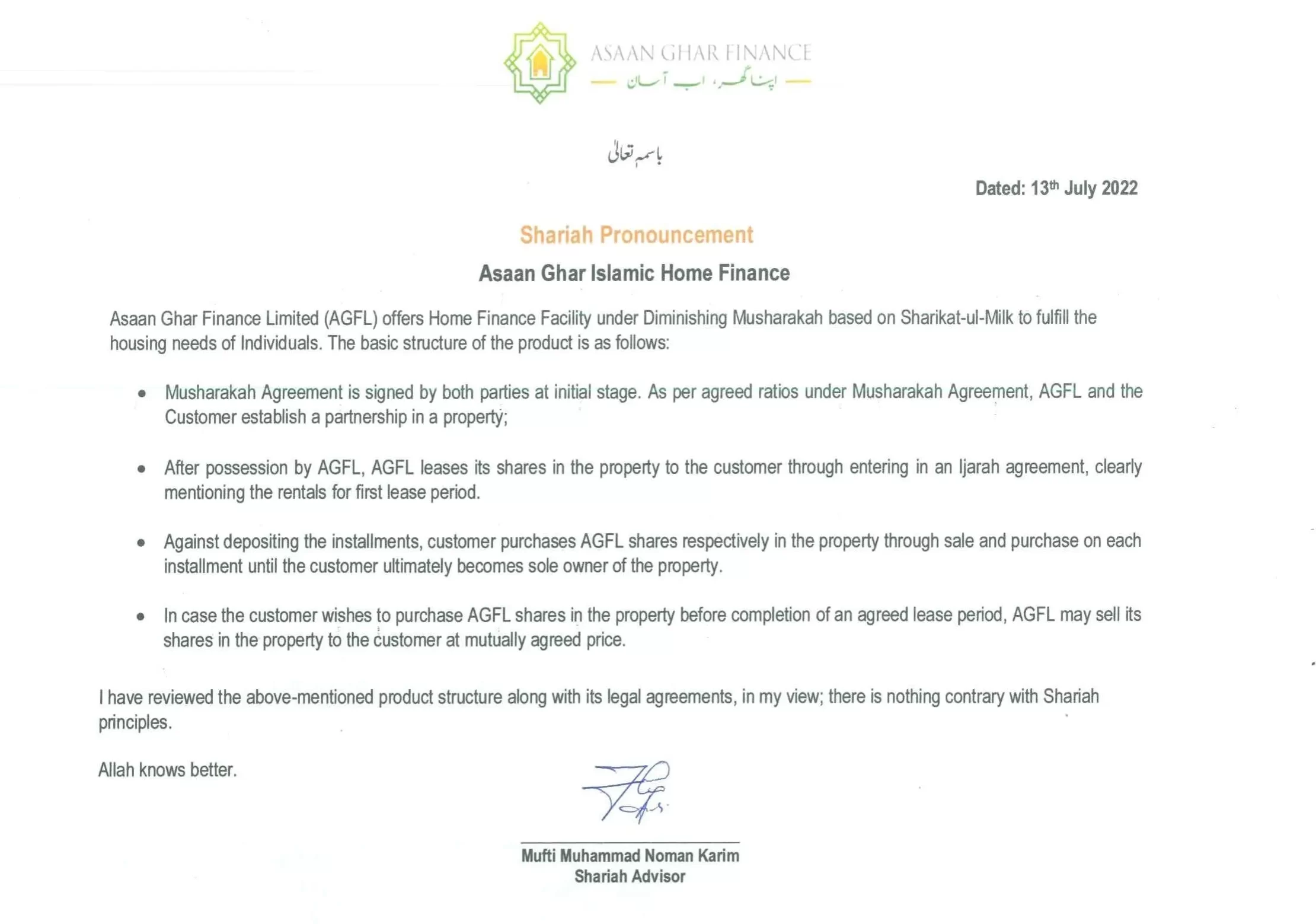
Exploring Home Loan Schemes in Pakistan: What You Need to Know
For a new home buyer in Pakistan, understanding home loans is pivotal in the journey towards homeownership. These financial tools offer the leverage needed to bridge the gap between dreams and reality, purchasing a home accessible and achievable. Home loans provide the necessary funding, allowing buyers to spread the cost over years, making homeownership a viable option for many who otherwise couldn’t afford it upfront.
In Pakistan, home loans are a key factor enabling many to transition from renters to homeowners. They not only provide the financial means necessary for purchasing a property but also introduce the possibility of home ownership to a wider segment of the population, including middle and lower-income families. This financial support is crucial, given the significant upfront costs associated with buying a home, offering a structured pathway towards achieving personal and financial stability through property ownership.
Overview of Home Loan Schemes
When exploring home loan schemes in Pakistan, potential homeowners can consider two main categories:
Conventional Financing Options
- Fixed Interest Rates: The interest rate remains constant throughout the loan term.
- Variable Interest Rates: Interest rates can fluctuate based on market conditions.
Islamic Financing Options
- Murabaha: A cost-plus financing method where the bank buys the property and sells it to the borrower at a profit.
- Ijarah: Similar to leasing, where the bank buys the property and leases it to the borrower until the loan is paid off.
These schemes are designed with flexibility in mind to accommodate the varied needs and preferences of homebuyers in Pakistan.
Benefits of Home Loan Schemes
Benefits of home loan schemes can be detailed as follows:
Conventional Financing Benefits
- Competitive Interest Rates: Potentially lower costs over time.
- Fixed or Variable Rates: Choose stability or flexibility in interest rates.
- Flexible Repayment Terms: Tailor your loan to fit your financial situation.
Islamic Financing Benefits
- Shariah Compliance: Interest-free financing aligns with Islamic principles.
- Profit-Based Financing: Clear, ethical profit margins instead of interest.
- Co-ownership Options: Gradual transfer of property ownership through leasing.
Both types of financing offer pathways to homeownership, with specific benefits designed to meet the financial and ethical considerations of a broad range of borrowers.
Eligibility Criteria
To be eligible for a home loan, applicants generally need to meet criteria related to income level, employment status, and credit history. A stable and sufficient income ensures the ability to repay the loan, while steady employment offers assurance of continued earnings. A positive credit history, indicating timely payments on previous debts, is also crucial. These factors collectively help lenders assess the risk of lending and determine an applicant’s loan eligibility.
Adding to the eligibility criteria, banks often require a minimum length of continuous employment or business operation, usually around 2-3 years, to demonstrate job stability. Self-employed individuals might need to show proof of a stable income through business financial statements. Age is another factor, typically between 25 to 65 years at loan maturity. Finally, the property in question must meet certain valuation and legal criteria. These comprehensive checks ensure that both the borrower and the property are sound investments for the bank.
Salaried Individuals
- Proof of Employment: Provide employment verification letter or salary slips to demonstrate steady income.
- Minimum Income Requirement: Meet the bank’s minimum income threshold, usually determined based on the loan amount applied for.
- Employment Tenure: Typically, a minimum of 1 to 2 years of continuous employment with the current employer is required.
Self-Employed Individuals
- Proof of Business Ownership: Present business registration documents or partnership agreements to verify ownership.
- Income Documentation: Provide audited financial statements, bank statements, or tax returns to demonstrate stable income.
- Business Tenure: Typically, a minimum of 2 to 3 years of continuous operation is required to establish the stability of the business.
Meeting these criteria helps assure lenders of the borrower’s ability to repay the loan, whether through stable employment or successful business operations.
How to Apply for Home Loan Schemes
Applying for a home loan in Pakistan involves several steps, and understanding the process can help streamline your application. Here’s a breakdown of the typical steps involved:
Step 1: Research and Choose a Lender
Research different banks and financial institutions offering home loan schemes.
Compare interest rates, terms, and eligibility criteria to find the best fit for your needs.
Step 2: Gather Necessary Documents
Collect required documents such as:
- Proof of identity (CNIC)
- Proof of income (salary slips for salaried individuals, tax returns or business financial statements for self-employed individuals)
- Employment verification letter
- Property documents (if already identified)
- Any other documents specified by the lender.
Step 3: Pre-Approval Process
Contact your chosen lender to initiate the pre-approval process.
Submit your documents for a preliminary assessment to determine your eligibility and loan amount.
Step 4: Property Valuation
Once pre-approved, the lender may conduct a valuation of the property you intend to purchase.
This valuation helps determine the loan amount and ensures the property’s value aligns with the loan.
Step 5: Loan Application Submission
Complete the formal loan application form provided by the lender.
Attach all necessary documents and submit them to the lender for review.
Step 6: Loan Processing and Approval
The lender will review your application and documents.
They may conduct further verification checks and assessments before making a decision.
Step 7: Loan Offer and Agreement Signing
If approved, the lender will issue a loan offer outlining the terms and conditions.
Review the offer carefully and sign the loan agreement if you agree to the terms.
Step 8: Disbursement of Funds
Once the loan agreement is signed, the lender will disburse the loan amount.
Funds are typically transferred directly to the seller or developer, or as specified in the agreement.
By following these steps and ensuring all necessary documents are in order, you can streamline the application process for a home loan scheme in Pakistan.
Tips for Choosing the Right Scheme
Choosing the right home loan scheme is a crucial decision that can significantly impact your financial future. Here are some tips to help you select the best scheme based on your individual financial situation and homeownership goals:
1. Assess Your Financial Situation
Evaluate your current financial status, including income, expenses, and savings.
Determine how much you can afford to borrow and comfortably repay each month.
2. Understand Loan Terms and Conditions
Thoroughly review the terms and conditions of each home loan scheme, including interest rates, repayment options, and any associated fees.
Consider whether fixed or variable interest rates better suit your financial stability and risk tolerance.
3. Compare Interest Rates
Compare interest rates offered by different lenders to find the most competitive rate.
Remember to consider both the initial interest rate and any potential fluctuations in variable rates over time.
4. Consider Loan Features
Look for additional features that may benefit you, such as the ability to make extra repayments without penalties, redraw facilities, or offset accounts.
Assess whether these features align with your financial goals and borrowing needs.
5. Evaluate Flexibility
Assess the flexibility of each home loan scheme, including options for changing loan terms, making early repayments, or switching between fixed and variable rates.
Choose a scheme that offers flexibility to adapt to changes in your financial circumstances.
6. Seek Professional Advice
Consider seeking advice from a financial advisor or mortgage broker who can provide personalized guidance based on your individual circumstances.
They can help you navigate the complexities of home loan schemes and make informed decisions.
7. Align with Homeownership Goals
Ensure that the home loan scheme you choose aligns with your long-term homeownership goals and aspirations.
Consider factors such as the desired loan term, affordability, and the type of property you wish to purchase.
By carefully considering these factors and seeking professional advice if needed, you can select the home loan scheme that best fits your financial situation and helps you achieve your homeownership goals effectively.
Conclusion
Exploring home loan schemes in Pakistan requires careful consideration and thorough research. Throughout this guide, we’ve covered the different types of home loan schemes available, including conventional and Islamic financing options, as well as the benefits, eligibility criteria, application process, and tips for choosing the right scheme. It’s essential to understand your financial situation, homeownership goals, and individual preferences when selecting a home loan scheme.
By evaluating the interest rates, loan features, flexibility, and alignment with your homeownership goals, you can make an informed decision that suits your needs. Remember to compare multiple lenders, seek professional advice if needed, and review all terms and conditions carefully before committing to a home loan scheme.
Ultimately, the right home loan scheme can make homeownership more accessible and achievable, helping you turn your dream of owning a home into a reality. Take the time to explore your options, weigh the pros and cons, and choose a scheme that aligns with your financial situation and long-term goals. With careful consideration and planning, you can embark on the journey towards homeownership with confidence and peace of mind.









Leave A Comment